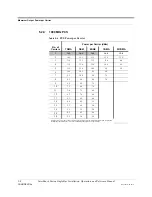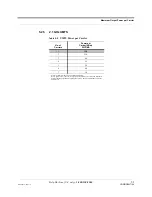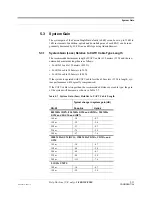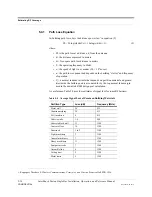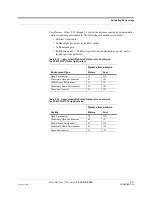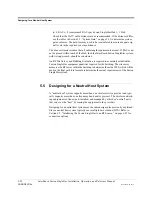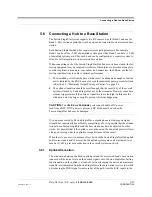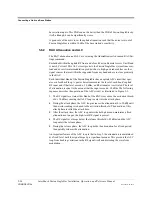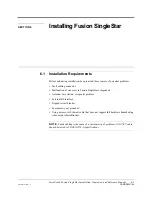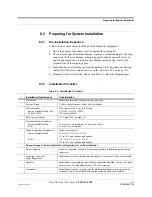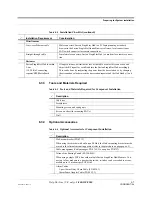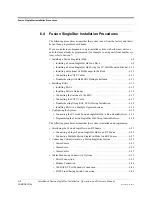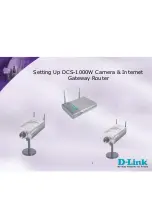
Help Hot Line (U.S. only): 1-800-530-9960
5-21
D-620605-0-20 Rev A
CONFIDENTIAL
Estimating RF Coverage
Example Design Estimate for a 1900 MHz CDMA Application
1.
Wireless service provider’s requirements:
• PCS (1920 MHz = average of the lowest uplink and the highest downlink fre-
quency in 1900 MHz PCS band)
• CDMA provider
• 3 CDMA carriers in the system
• –75 dBm design goal and 95% area coverage
• Base station with simplex RF connections
2.
Power Per Carrier
: The tables in Section 5.2, “Maximum Output Power per Car-
rier,” on page 5-4 provide maximum power per carrier information. The 1900
MHz CDMA table (on page 5-8) indicates that Fusion SingleStar can support 3
carriers with a recommended maximum power per carrier of +11.0 dBm. The
input power should be set to the desired output power minus the system gain.
3.
Building information
:
• Two floor building with 4,645 sq. meters (50,000 sq. ft.) per floor; total
9,290 sq. meters (100,000 sq. ft.)
• Walls are sheetrock construction; suspended ceiling tiles
• Antennas used will be omni-directional, ceiling mounted
• Standard office environment, 80% hard wall offices and 20% cubicles
4.
Link Budget
: In this example, a design goal of –75 dBm is used. Suppose 3 dBi
omni-directional antennas are used in the design. Then, the maximum RF propa-
gation loss should be no more than 89.0 dB (11.0 dBm + 3 dBi + 75 dBm) over
95% of the area being covered.
It is important to note that a design goal such as
–75 dBm is usually derived taking into account multipath fading and log-normal
shadowing characteristics. Thus, this design goal will only be met “on average”
over 95% of the area being covered. At any given point, a fade may bring the sig-
nal level underneath the design goal.
5.
Path Loss Slope
: For a rough estimate, Table 5-11, “Estimated Path Loss Slope for
Different In-Building Environments” on page 5-16, shows that a building with 80%
hard wall offices and 20% cubicles, at 1900 MHz, has an approximate path loss
slope (PLS) of 38.1. Given the RF link budget of 89 dB, the distance of coverage
from each RAU will be 21.8 meters (71.5 ft). This corresponds to a coverage area
of 1492 sq. meters (16,050 sq. ft.) per RAU (refer to Section 5.4.1 for details on
path loss estimation). For this case assume a circular radiation pattern, though the
actual area covered will depend upon the pattern of the antenna and the obstructions
in the facility.
6.
Equipment Required
: Since you know the building size, you can now estimate
the Fusion SingleStar equipment quantities needed. Before any RF levels are
tested in the building, you can estimate that 3 antennas per level will be needed.
This assumes no propagation between floors. If there is propagation, you may not
need antennas on every floor.
a.
3 antennas per floor × 2 floors = 6 RAUs


